|
|||
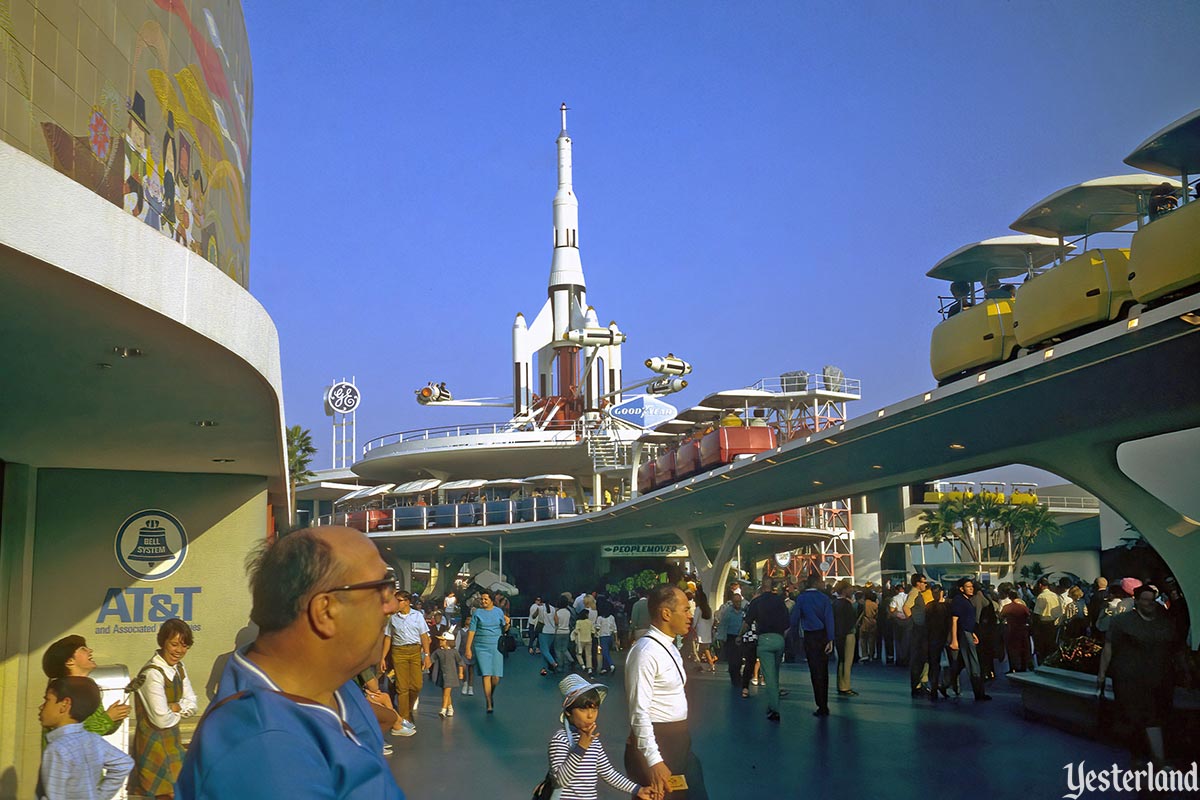
Photo by Charles R. Lympany, circa 1967, courtesy of Chris Taylor Yester Tomorrowland - “World on the Move” |
|||
|
There’s so much to do in Yester Tomorrowland. Circle-Vision 360 is right across from Adventure Thru Inner Space. Colorful PeopleMover trains scoot by overhead and Rocket Jets orbit not far away. But before you run to the next ride, take a moment to look up at the two ceramic tile murals that make Tomorrowland warm and inviting. |
|||
|
|
|||
|
One mural is on the Bell System CircleVision 360 building. The other is on the Adventure Thru Inner Space building. Together, the two murals form a work of art called “The Spirit of Creative Energies Among Children.” These aren’t just smooth ceramic tiles. The murals have textures as well as colors. |
|||
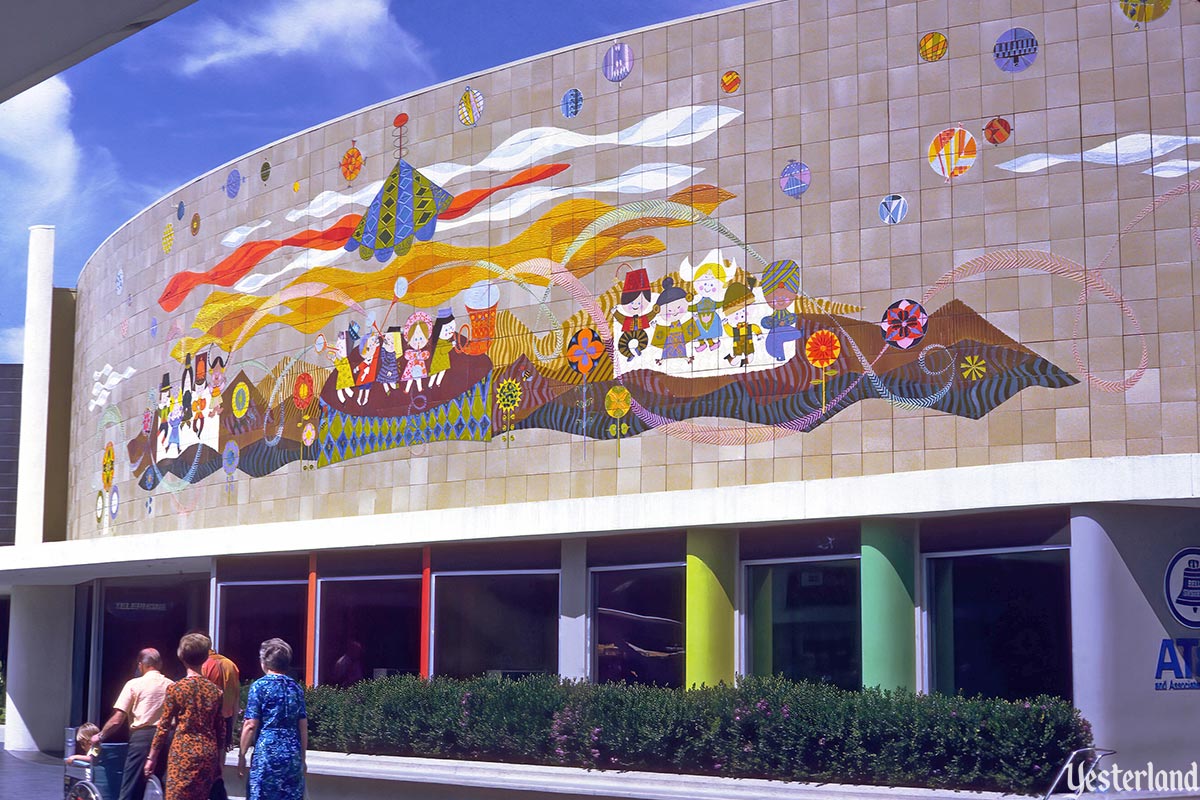
Photo by Charles R. Lympany, circa 1967, courtesy of Chris Taylor North mural on the CircleVision 360 building |
|||
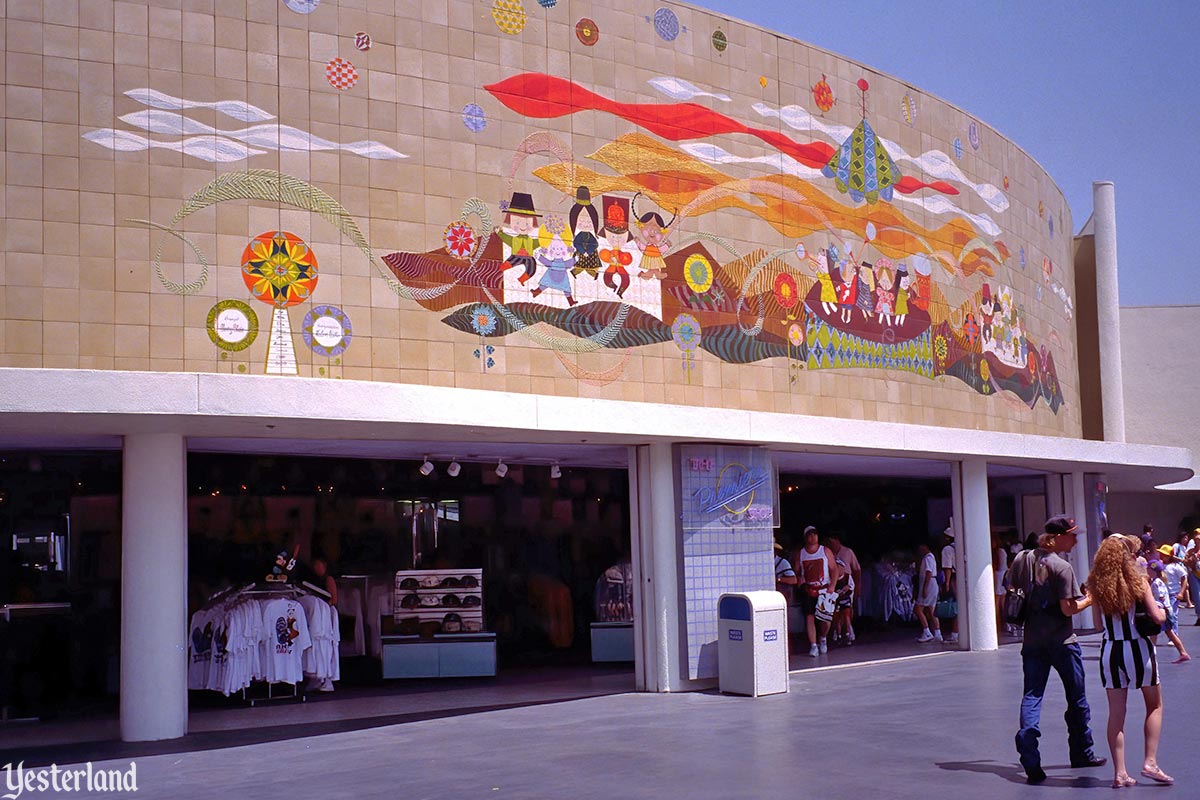
Photo by Werner Weiss, 1996 Another view of the north mural |
|||
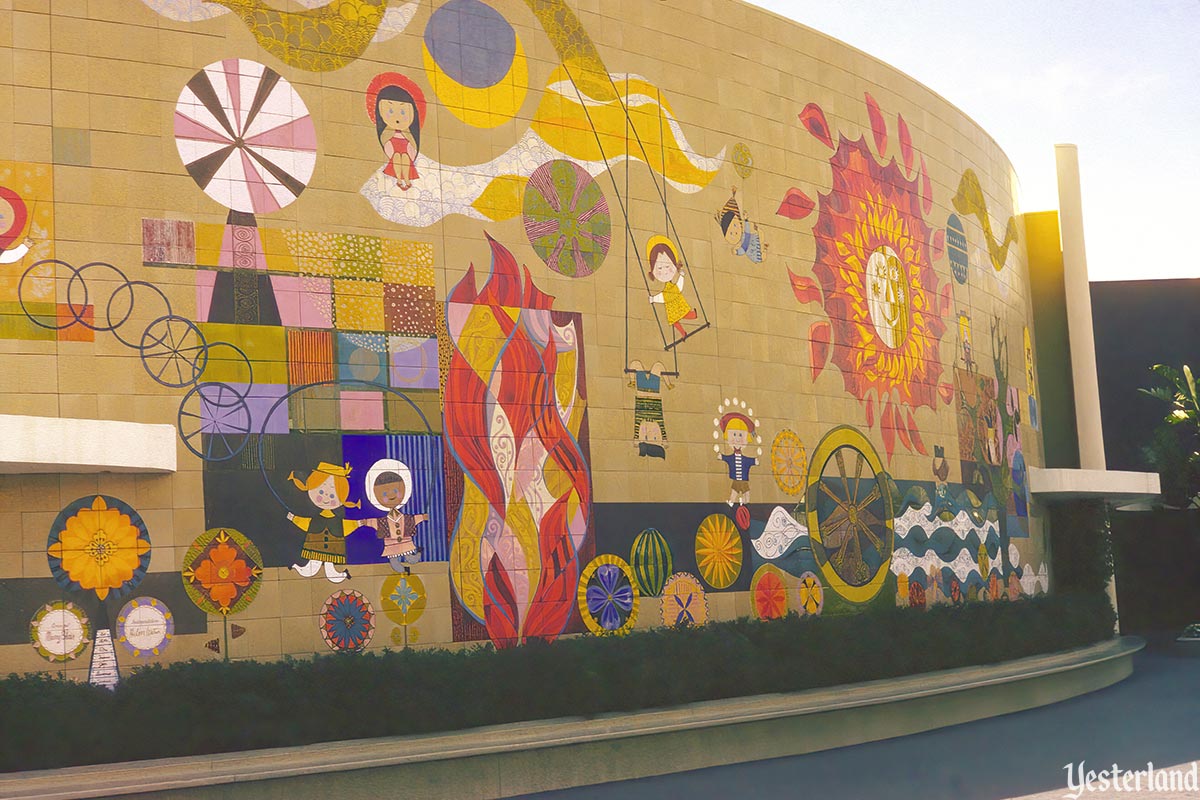
Photo by Charles R. Lympany, circa 1967, courtesy of Chris Taylor South mural on the Adventure Thru Inner Space building |
|||
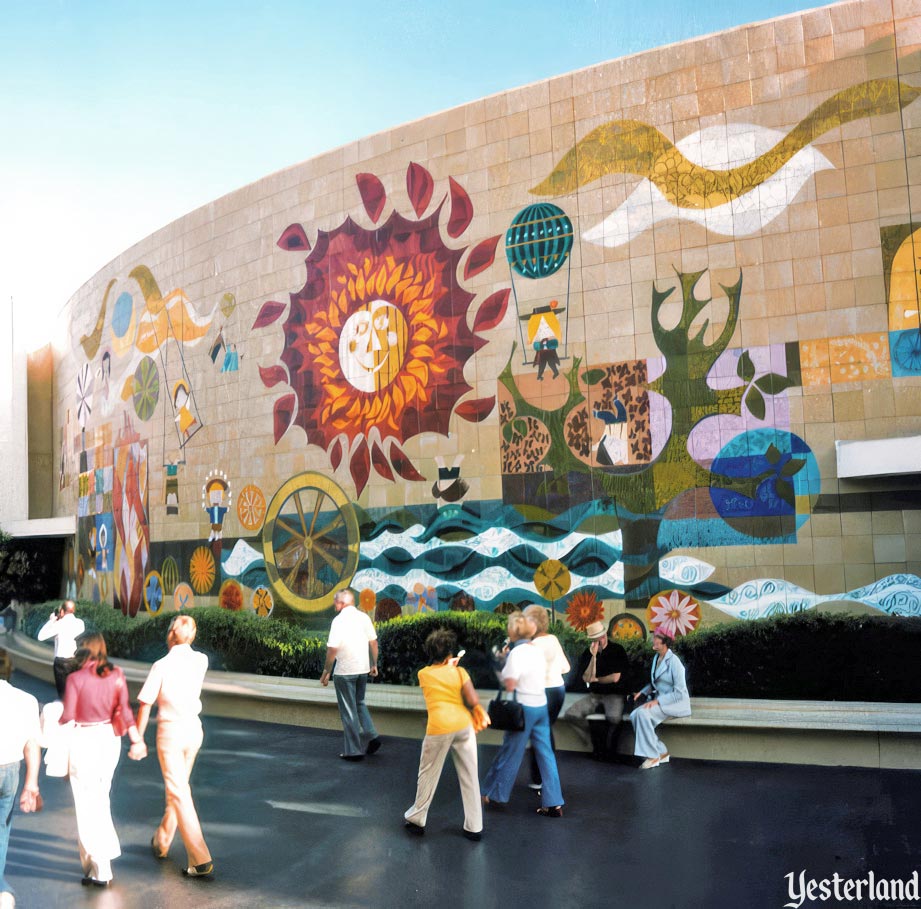
GAF Pana-Vue slide image © WDP, courtesy of DisneyPix Another view of the south mural |
|||
|
You say you’re reminded of “it’s a small world” in Fantasyland? That’s not a coincidence. The amazing artist who designed these delightful murals—as well as being a key creative force behind “it’s a small world”—is Mary Blair. Wait a minute… What are these murals doing in Tomorrowland? There’s nothing futuristic or technological about these murals, is there? Actually, the north mural shows children from different nations dancing and making music. Ribbons above their heads symbolize global communications. At the top of the mural, communication satellites bring the world closer together. The south mural, on the Adventure Thru Inner Space building, is about energy, with nods to solar energy, wind energy, water power, and fire. |
|||
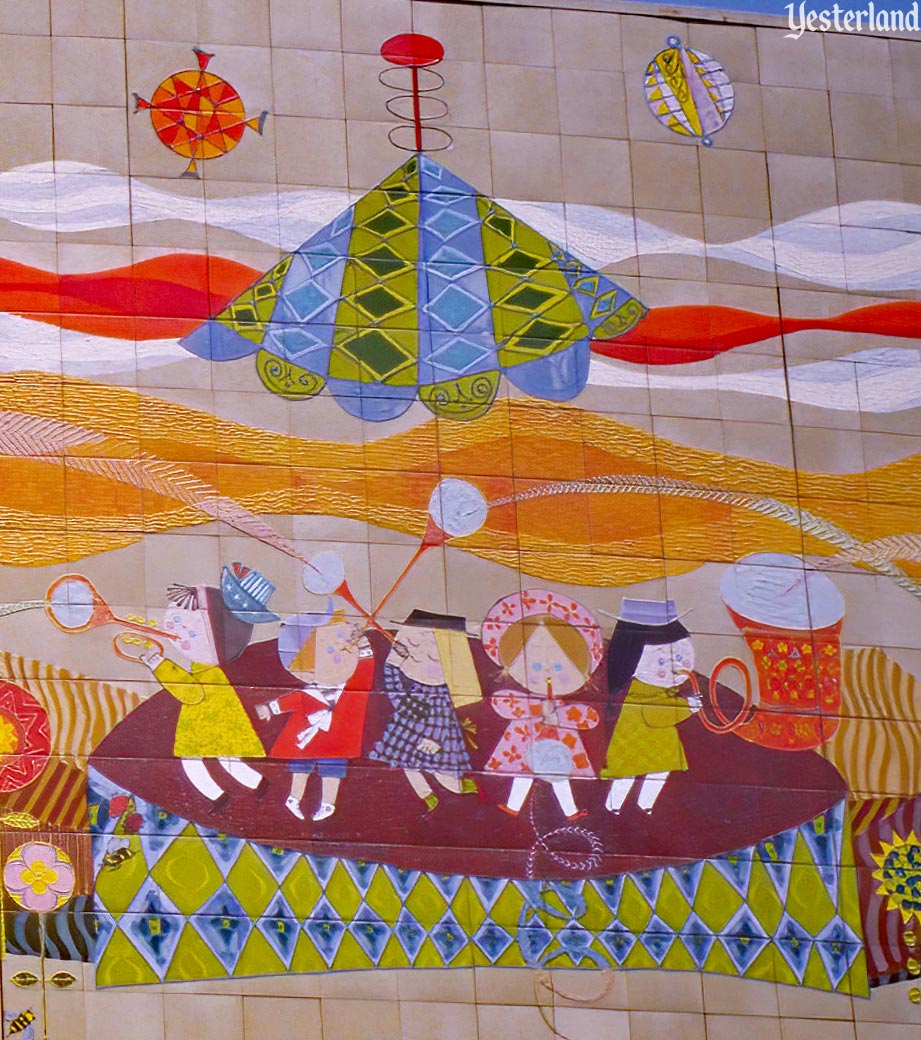
Photo by Werner Weiss, 1996 Children of the world making music |
|||
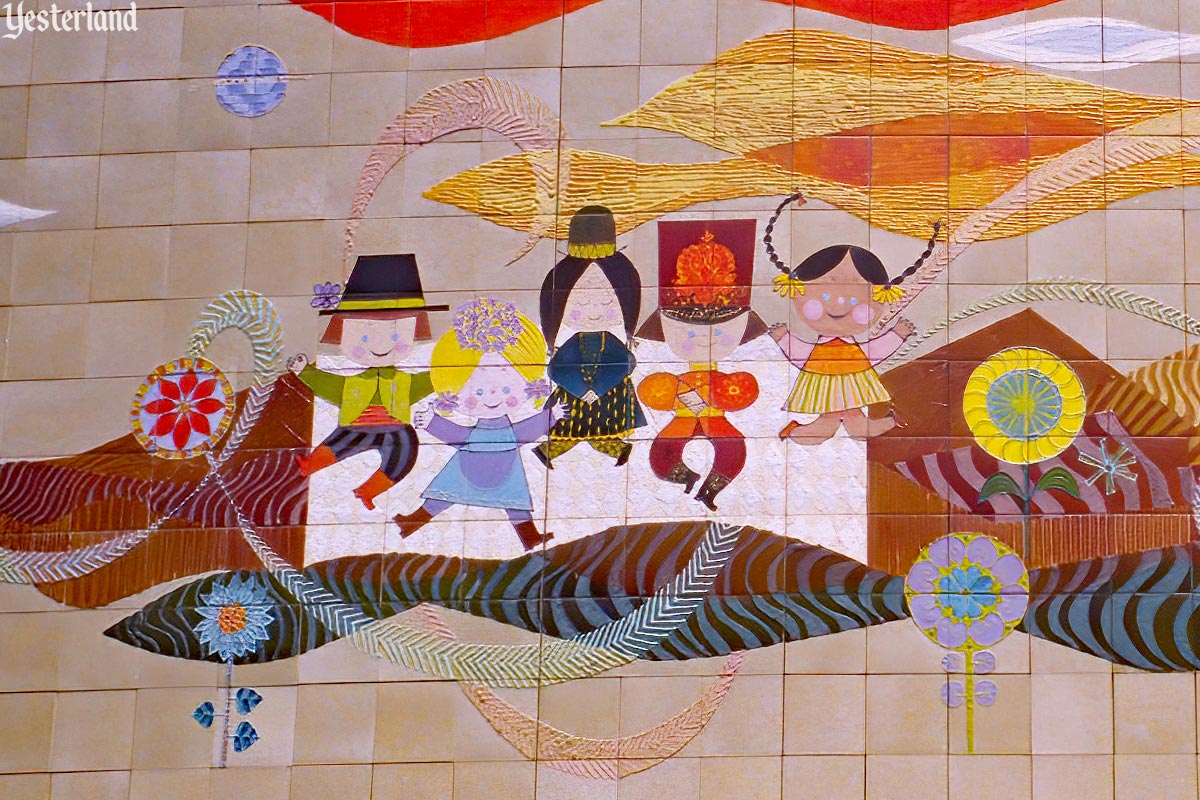
Photo by Werner Weiss, 1996 Children of the world dancing |
|||
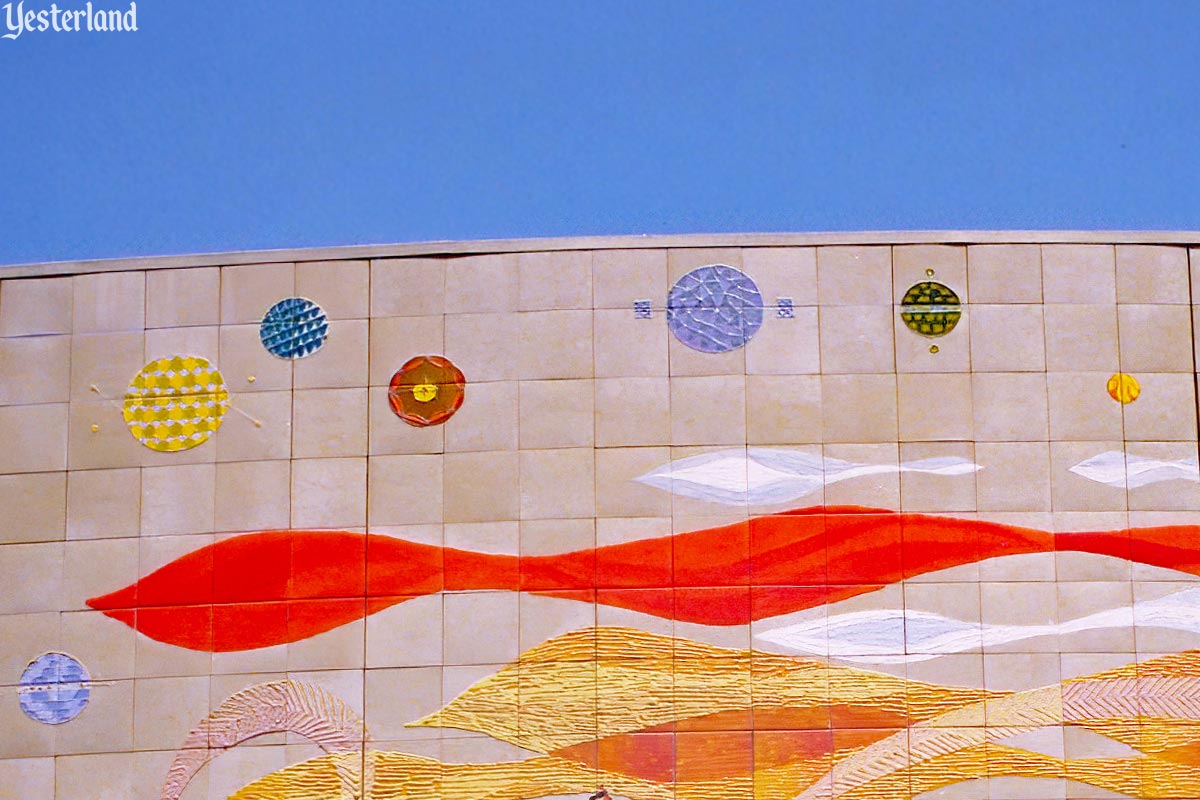
Photo by Werner Weiss, 1996 Colorful communication satellites |
|||
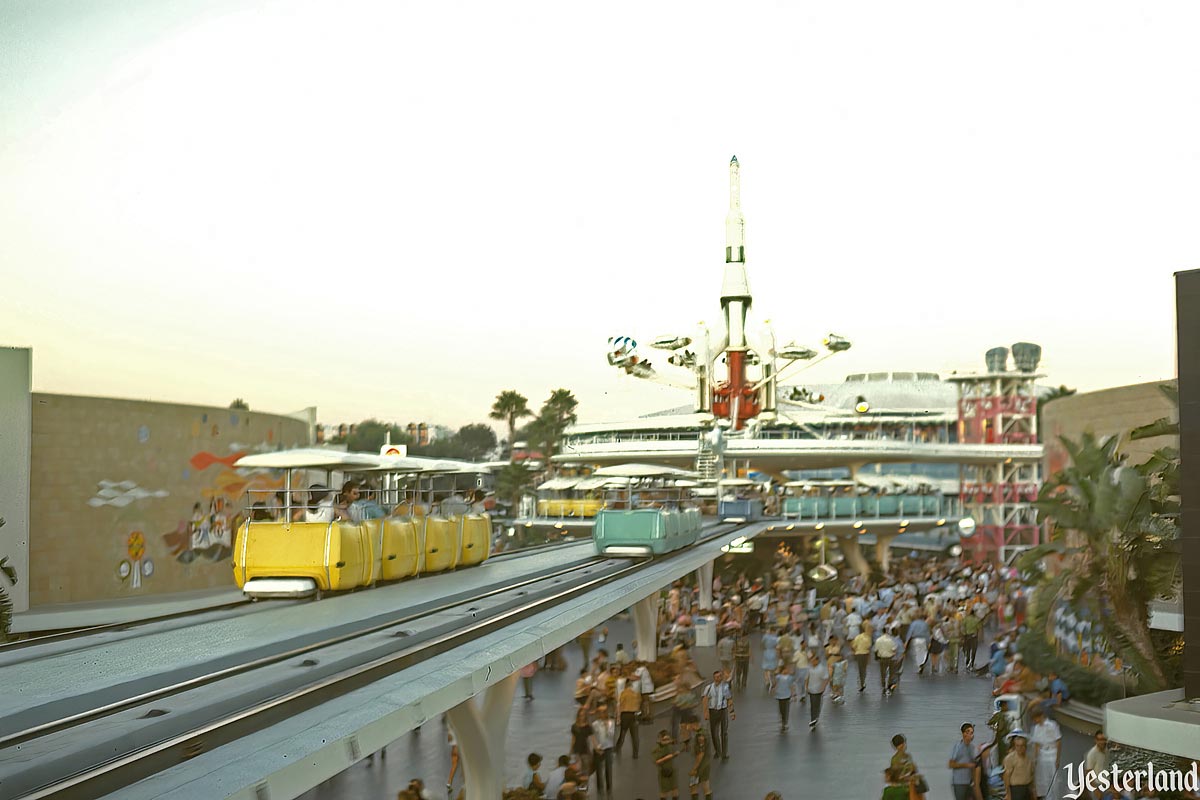
Photo by Werner Weiss, 1974 Eye-level view of Mary Blair’s murals from the PeopleMover |
|||
|
Each mural is 54 feet in length. The north mural is 15½ feet high; the south mural is even taller because it begins closer to the ground. Although the murals are from the mid-1960s, their themes are just as important six decades later—perhaps even more so. These murals are timeless. Walt Disney personally chose to have Mary Blair’s art bring optimism and joy to Tomorrowland. |
|||
|
|
|||
|
When Disneyland’s $20 million New Tomorrowland opened in 1967, two striking murals by Mary Blair faced each other. Unfortunately, Walt Disney died before he could see his New Tomorrowland completed. |
|||
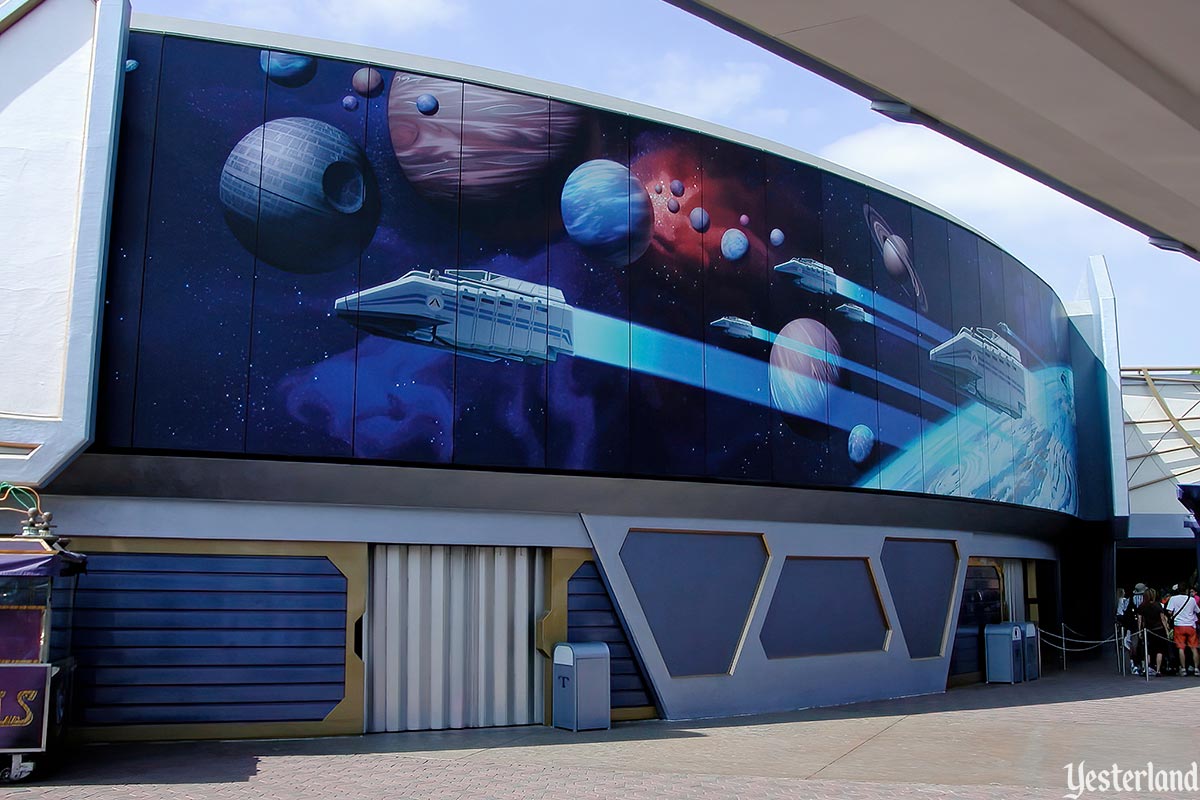
Photo by Werner Weiss, 2006 Star Tours mural (1986-) on the south building |
|||
|
The south mural (on the Inner Space building) lasted until 1986. It was replaced by a space mural, which served as the facade for the new Star Tours attraction (1987). For around ten years, the north Mary Blair mural and the Star Tours mural faced each other. It was an odd juxtaposition of styles. |
|||
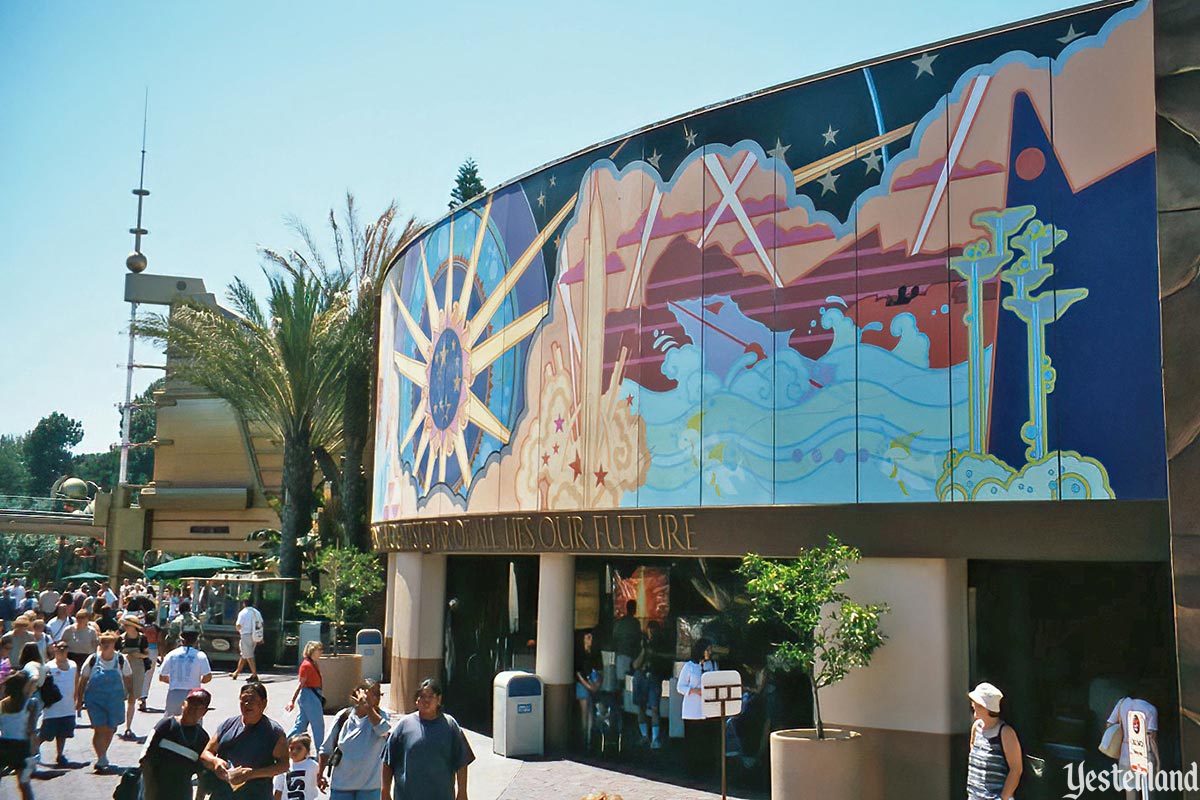
Photo by Werner Weiss, 2000 1998 Tomorrowland Mural (1998-2005) on the north building |
|||
|
The north mural (on the Circle-Vision 360 building) lasted until 1997. This legacy from the 1967 New Tomorrowland project became a victim of the 1998 New Tomorrowland project. The 1998 Tomorrowland Mural was actually sort of a Yesterland mural, featuring pre-1967 Tomorrowland transportation systems. It was still an odd companion to the space-themed Star Tours mural across the corridor. |
|||
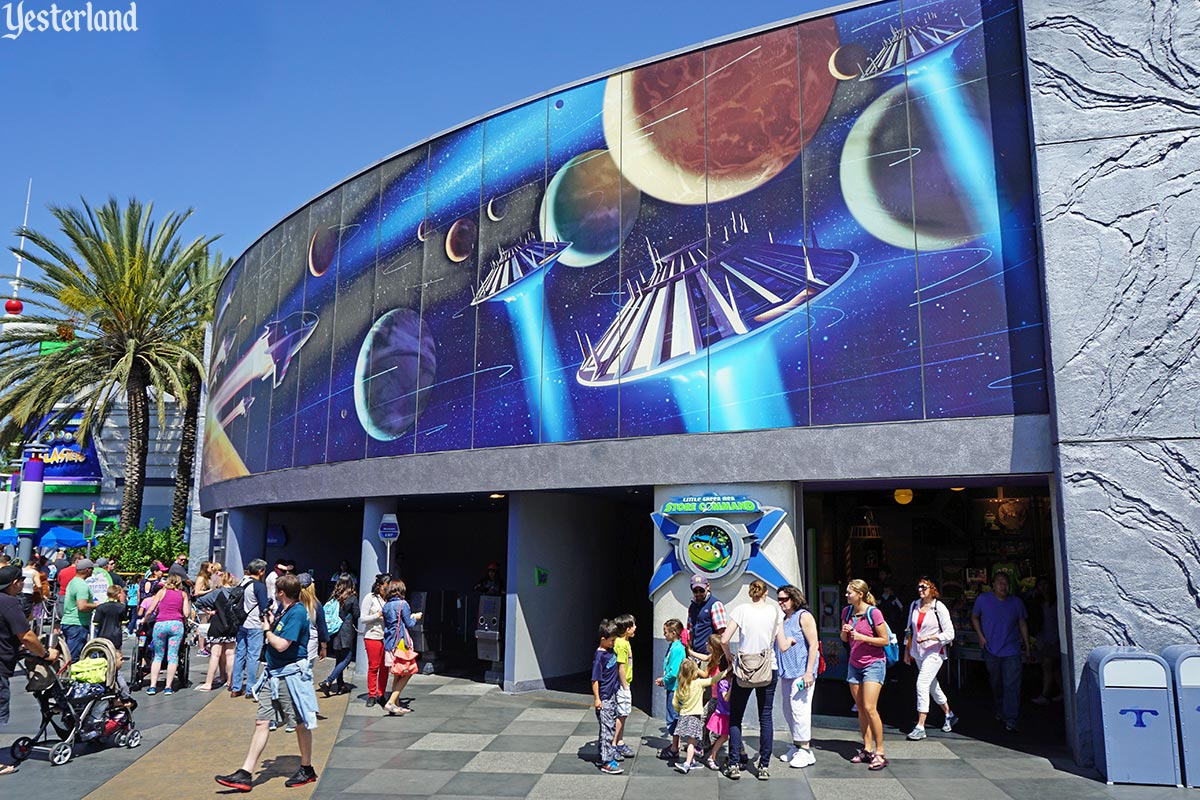
Photo by Werner Weiss, 2017 Current mural (2005-) on the north building |
|||
|
The 1998 mural had a short life. In 2005, it was replaced by a space-themed mural for the new Buzz Lightyear Astro Blasters (2005) attraction. The corridor once again had murals that complemented each other. It’s a shame that timeless art by a legendary Disney artist was replaced by lesser murals—not awful murals, just murals that don’t measure up to the art they replaced. |
|||
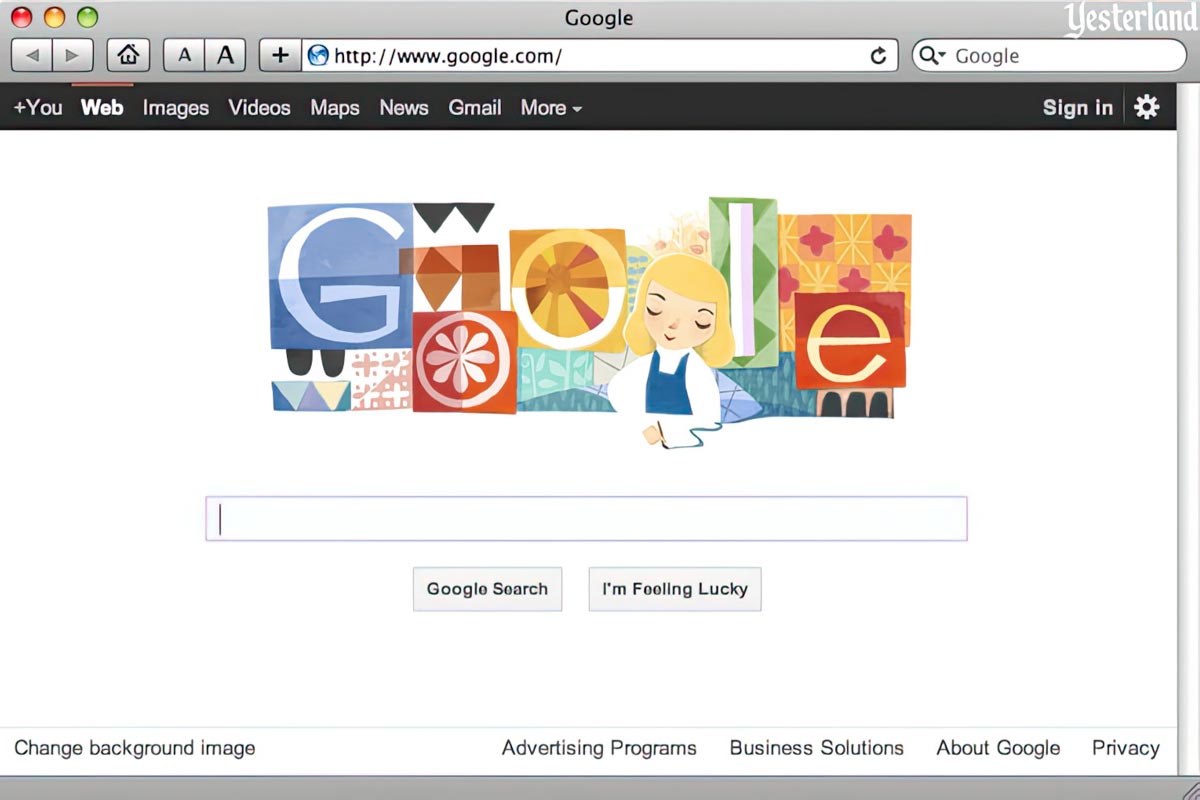
© Google 2011 Google Doodle on October 21, 2011 |
|||
|
Meanwhile, Mary Blair (1911-1978) has become much better known than she was during her lifetime. On the 100th anniversary of her birth, Google devoted a Google Doodle to her. Working for Walt Disney Productions in the 1940s and early 1950s, Blair designed stylized concept art for animated features. You might even recognize her work in Saludos Amigos, The Three Caballeros, Melody Time, Cinderella, and Alice in Wonderland. In his book Before the Animation Begins (Hyperion, 1996), animation historian John Canemaker devoted 29 pages to Mary Blair. No other Disney artist came close to getting so much coverage in this book. Canemaker followed up with an entire book about Mary Blair, The Art and Flair of Mary Blair, published in 2003. It’s a wonderful art book with many examples of Mary Blair’s stylized concept designs for animated Disney films, as well as art that Mary Blair did outside of Disney. Although the original edition is out-of-print, there’s now an updated edition with improved color fidelity. |
|||
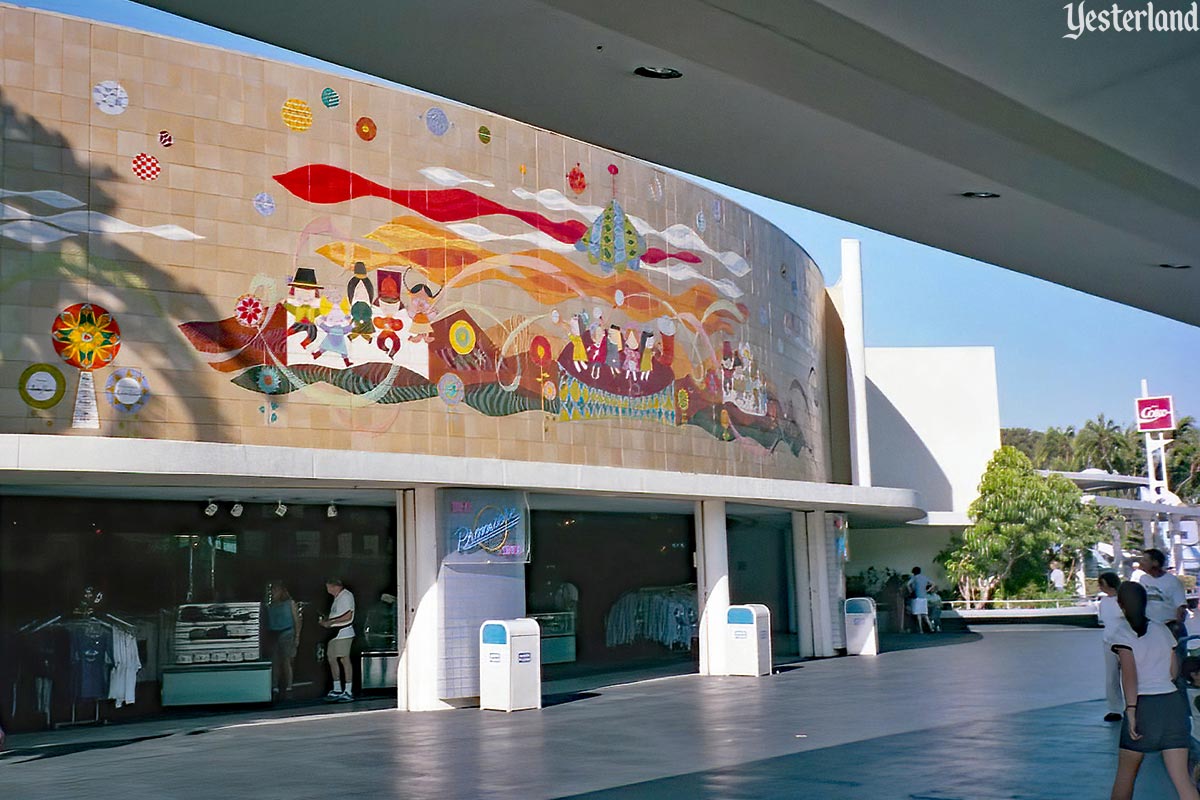
Photo by Chris Bales, 1996 Another look at the Mary Blair mural on the north building |
|||
|
Will we ever see the Mary Blair Tomorrowland murals again? Were the murals destroyed? Or are they still intact under the current murals? In The Art and Flair of Mary Blair, John Canemaker wrote: The Tomorrowland murals were not truly permanent: both “disappeared” when they were covered over by renovations in 1987 and 1998. “Mary Blair’s murals were not damaged or painted on,” [longtime Imagineering executive] Marty Sklar notes, “but the decision was made for cost reasons to leave them in place—hidden treasures at Disneyland!” It would be great if Marty Sklar’s story of undamaged murals—hidden treasures—were true. Unfortunately, evidence suggests otherwise. A YouTube video, 1986 Disneyland Tomorrowland Mary Blair mural tile removal by AdamConlea, shows workers destroying entire rows of tiles during the construction of Star Tours. Openings were cut into the Star Tours building, destroying the bottom of the mural. The only reason any of the south mural survived is because it was easier to cover the remainder than to destroy it entirely. The north mural has fared better. A new curved wall was built over the Mary Blair mural in 1997. Although the work was not done with preservation in mind, most of the north mural is entombed behind the wall. There was no need to cut openings because the north building was already open at the ground level, with the mural above. Maybe bringing optimism and joy back to Tomorrowland would be a good idea—even if it requires carefully reproducing the missing and damaged tiles. That seems unlikely to happen, but if the original drawings are still safely locked away at WDI, it’s not an impossibility. |
|||
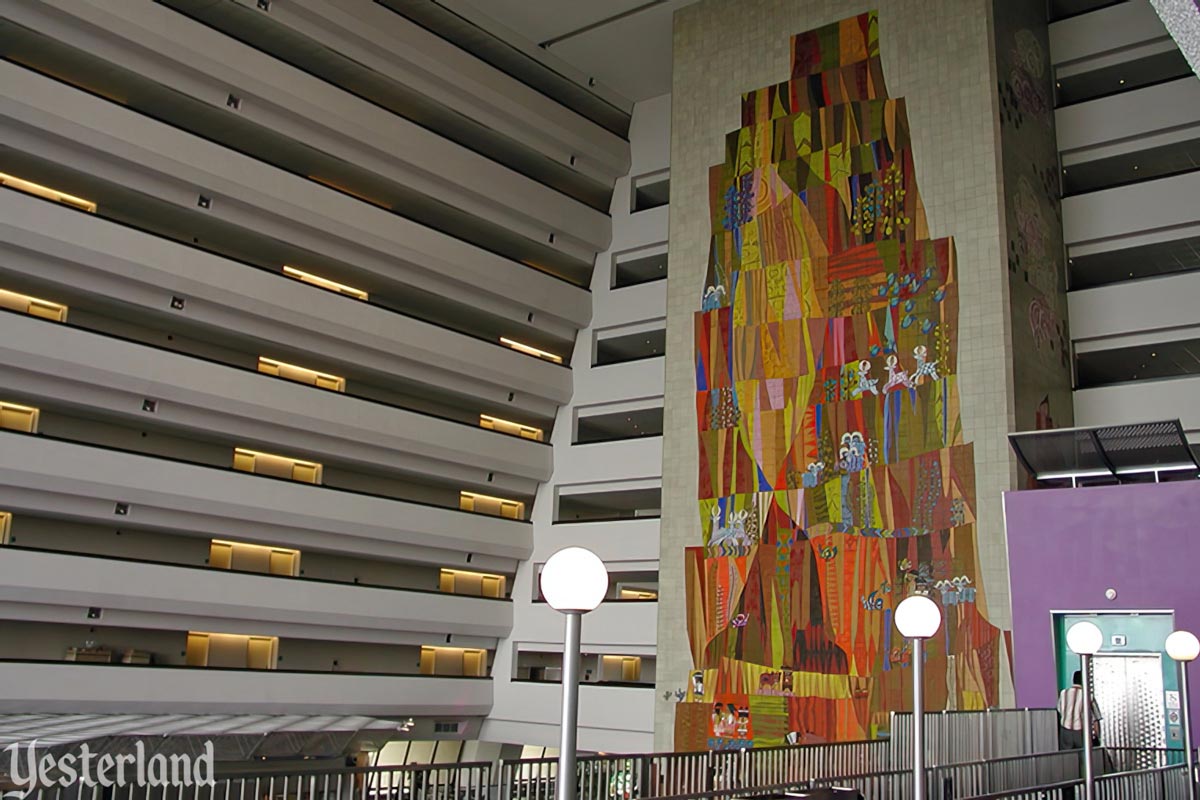
Photo by Werner Weiss, 2003 Mural in Disney’s Contemporary Resort, Walt Disney World |
|||
|
Mary Blair’s largest mural is not in Yesterland. It’s in the dramatic Grand Canyon Concourse atrium of Disney’s Contemporary Resort at Walt Disney World. It’s been there since the resort opened in 1971, and it continues to delight guests. Featuring stylized birds, animals, flowers, and Native American children, the mural consists of 18,000 hand-painted tiles and is 90 feet tall. You can catch a glimpse from the monorail, but that won’t give you enough time to look for the five-legged goat. The mural faces four different directions, each telling a different part of the story of the children, animals, and geology of the Grand Canyon. The next time you’re at Walt Disney World, make a point of visiting the mural. |
|||
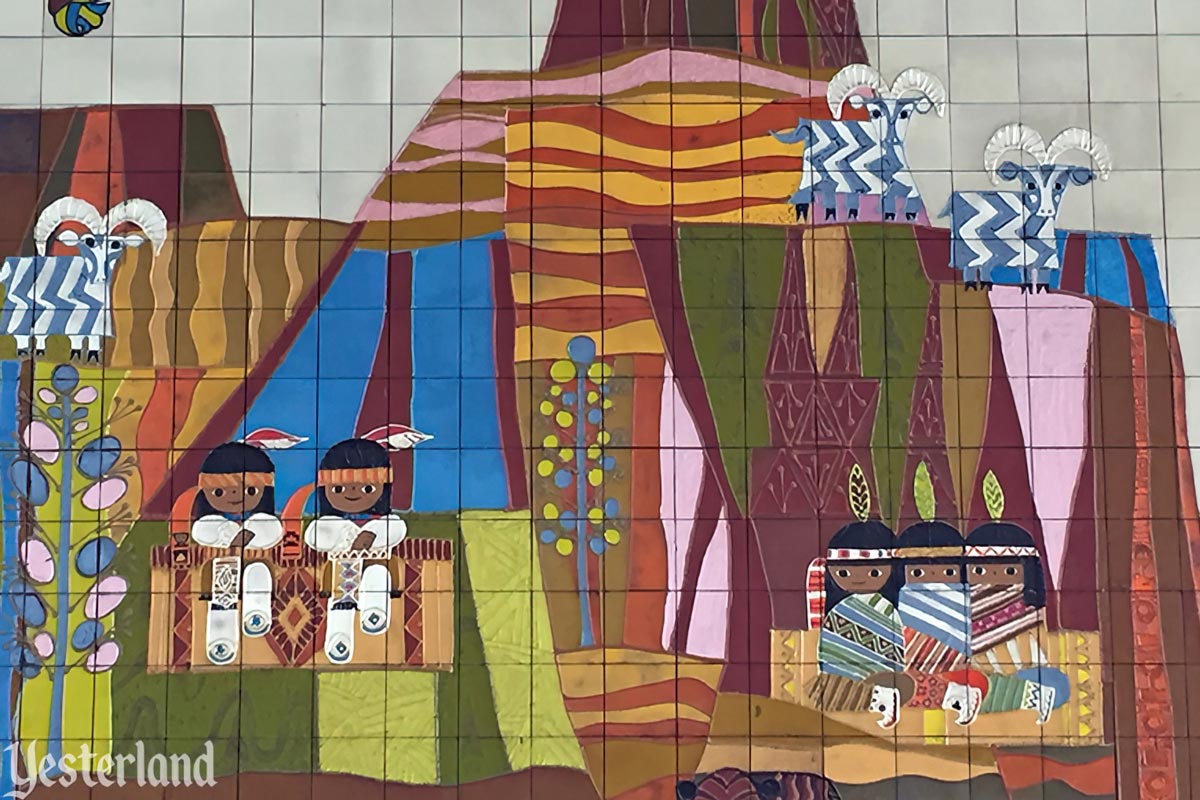
Photo by Werner Weiss, 2016 Five-legged mountain goat at Disney’s Contemporary Resort |
|||
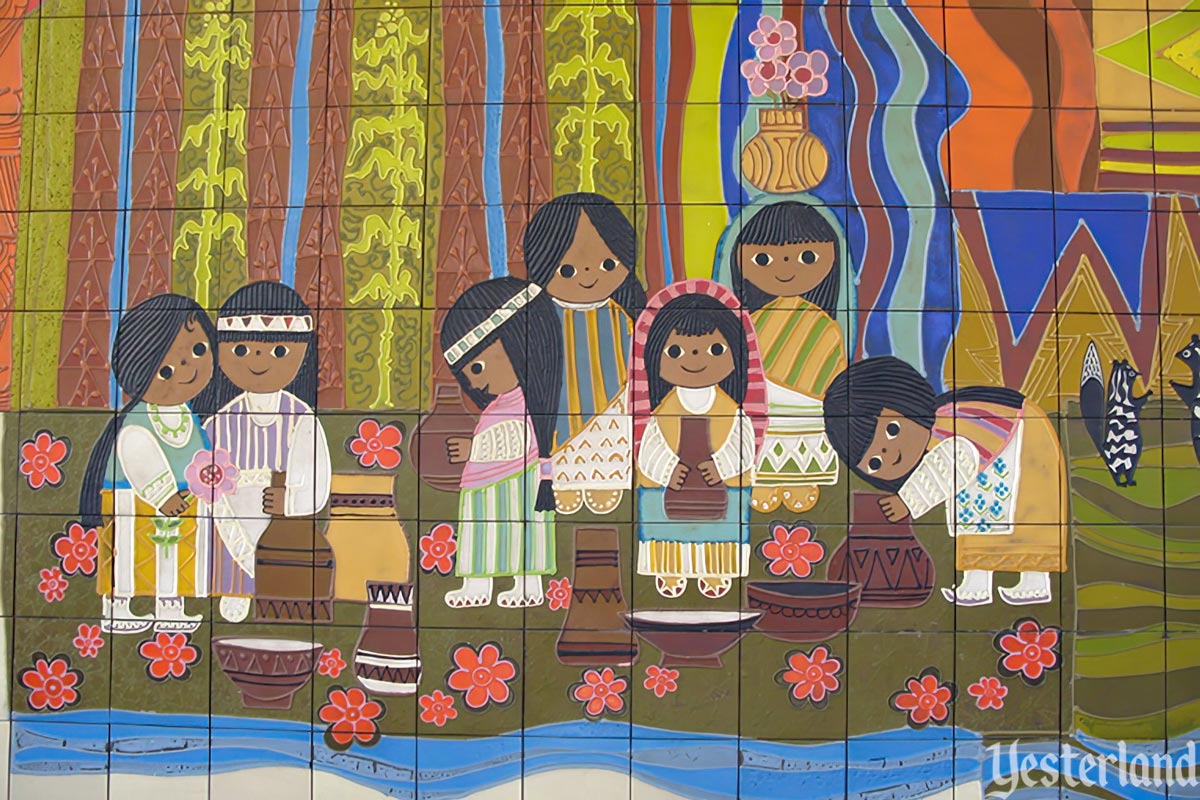
Photo by Werner Weiss, 2009 Mural detail at Disney’s Contemporary Resort |
|||
|
Museums honor Mary Blair and her art. This article concludes with two museums. |
|||
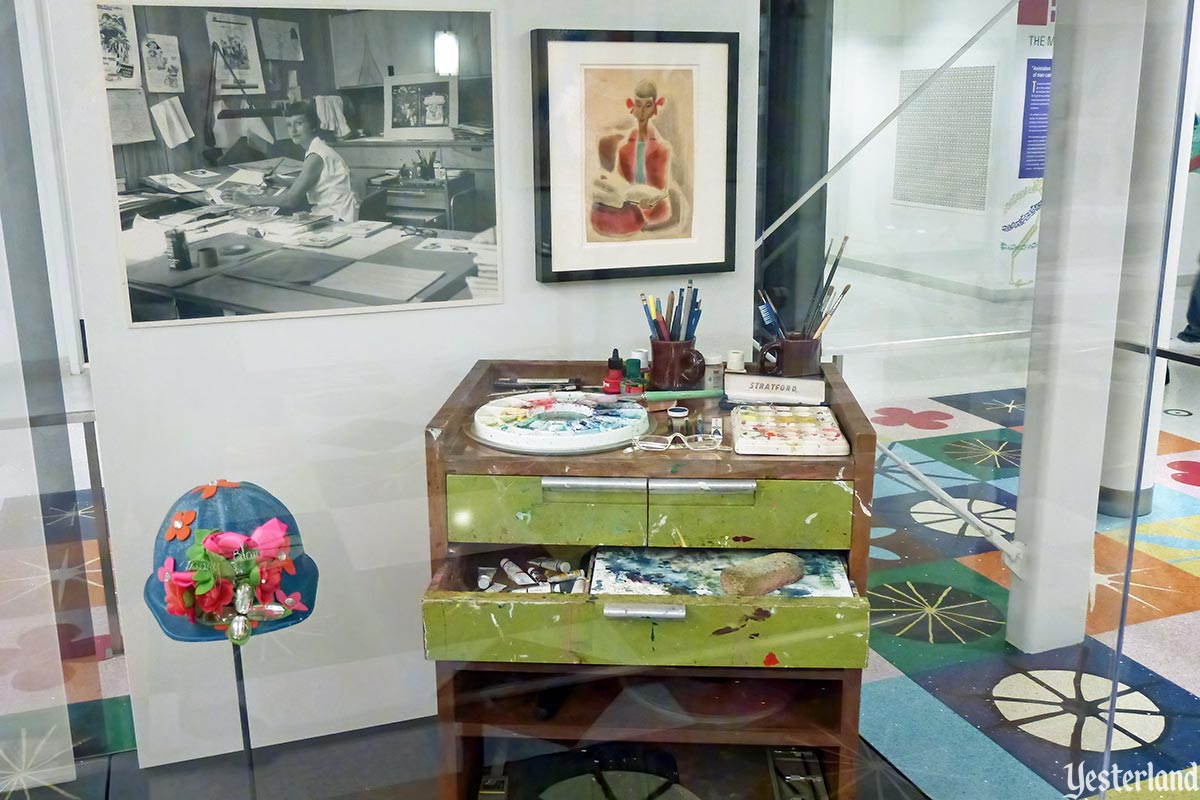
Photo by Werner Weiss, 2013 Mary Blair display case at the Walt Disney Family Museum |
|||
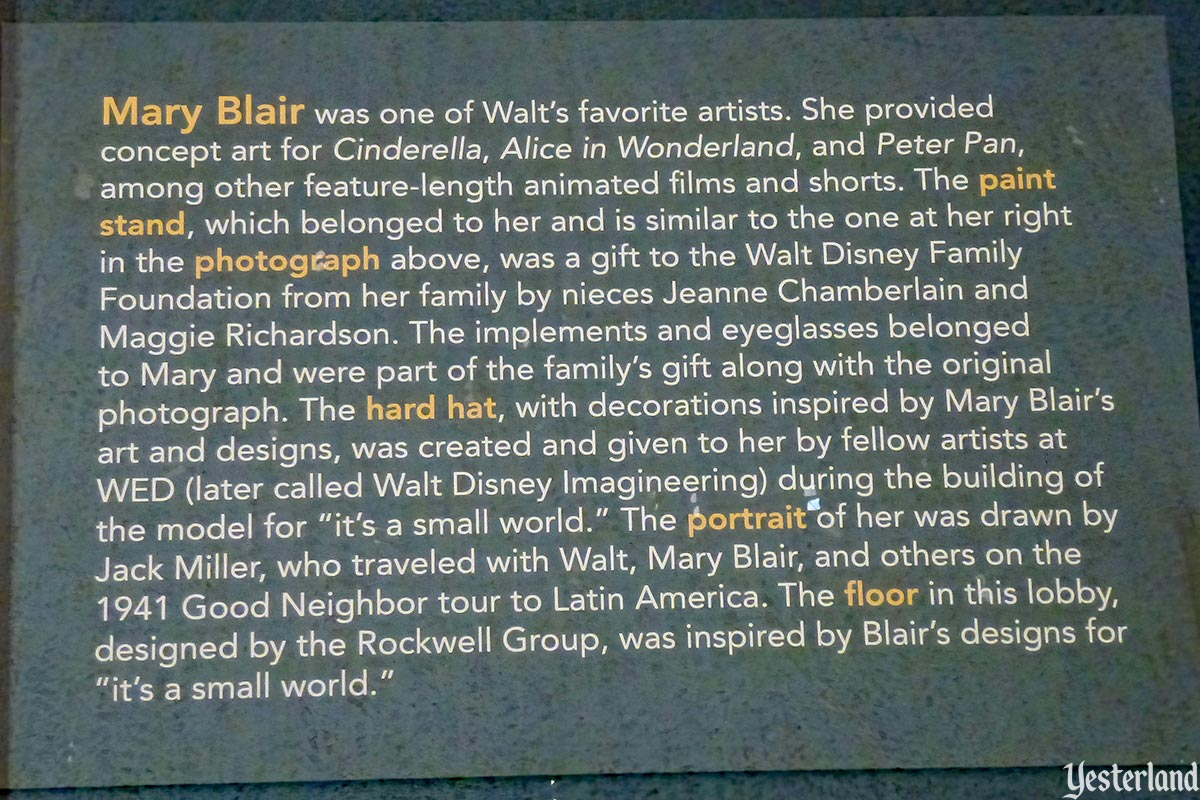
Photo by Werner Weiss, 2013 Label for the Mary Blair display case |
|||
|
A display case at the Walt Disney Family Museum in San Francisco features a paint stand, eyeglasses, and implements that belonged to Mary Blair. The decorated hard hat was a gift to Blair by other WED (now WDI) artists during the “it’s a small world” project. |
|||
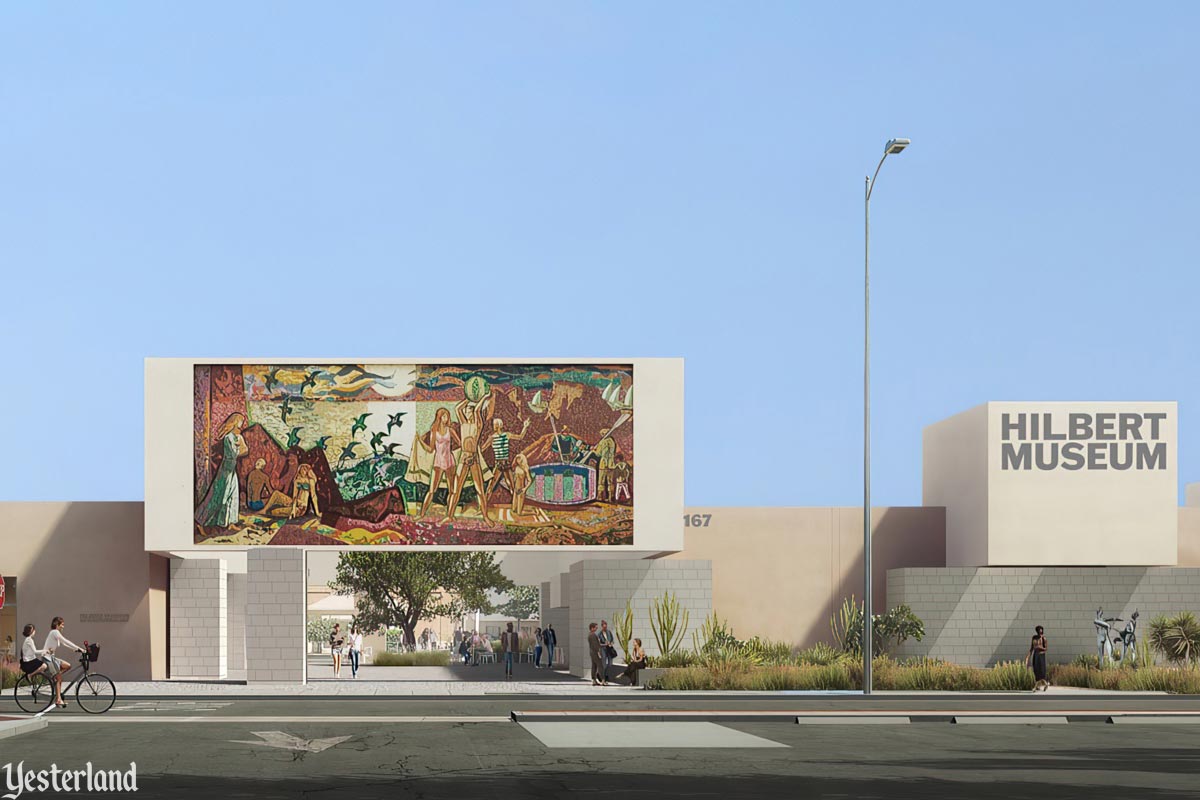
Architectural rendering © Hilbert Museum of California Art Hilbert Museum of California Art at Chapman University |
|||
|
The Hilbert Museum of California Art is a wonderful art museum located just five miles southeast of Disneyland Park on the edge of Chapman University. After a significant expansion, the museum will have its Expansion Grand Opening on February 23, 2024. One of the initial exhibits will be Mary Blair’s Wonderland: Imagining Disney’s Alice: “This ultimate Alice tribute to Disney artist Mary Blair (1911-1978), encompasses both Blair’s Alice in Wonderland concept art and original Alice art by other Disney illustrators.” |
|||
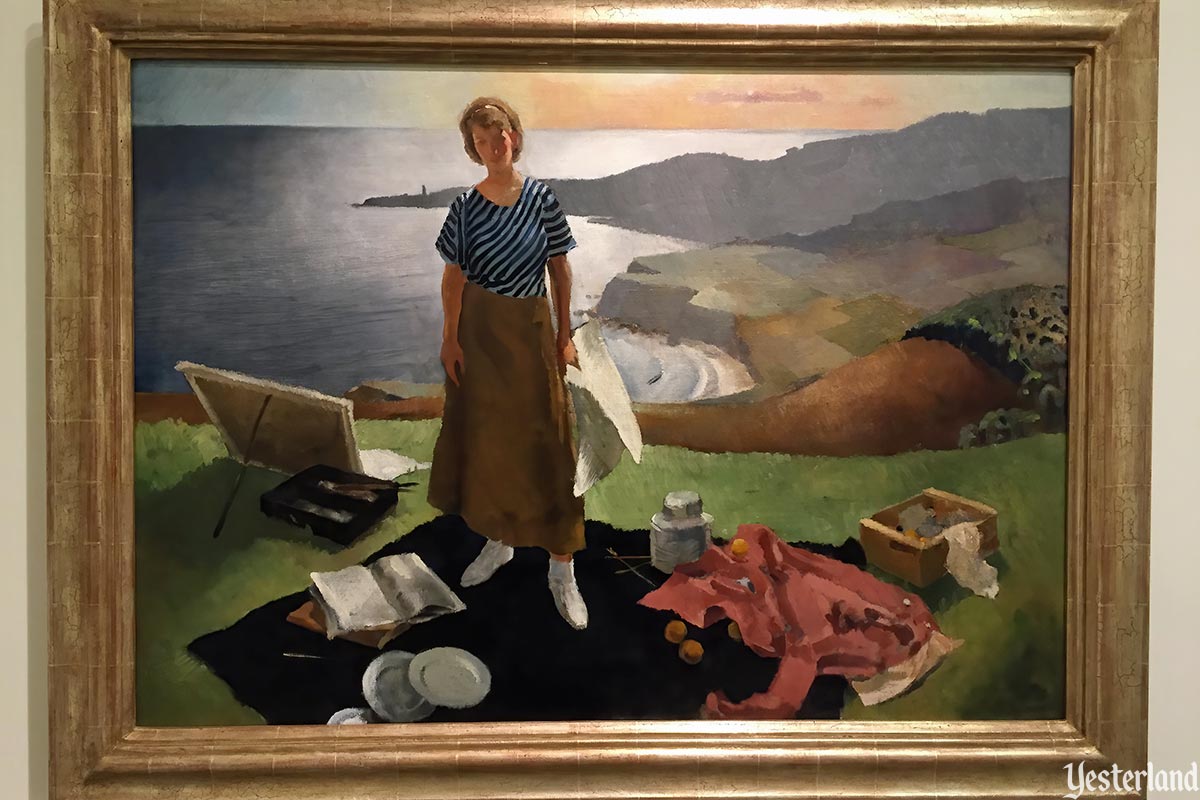
Photo by Werner Weiss, 2017 “Mary by the Sea“ by Lee Blair, 1934, at the Hilbert Museum of California Art |
|||
|
The museum’s permanent collection includes a painting of Mary Blair by her husband Lee Blair, who was an animator and writer for Walt Disney Productions. Admission and parking are free. For more information, including hours, visit the official website of the Hilbert Museum. |
|||
|
|
Click here to post comments at MiceChat about this article.
© 2024 Werner Weiss — Disclaimers, Copyright, and Trademarks Updated February 9, 2024 |
||